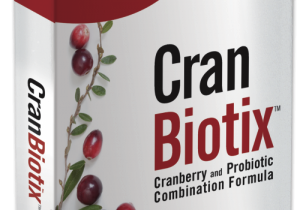Awareness of probiotics growing worldwide, expert says

Laura-Daisy Jones, global food science analyst for market research firm Mintel, gave that overview of the global market for pre- and probiotics during a recent webinar hosted by NutraIngredients.
Overall, she said, despite challenges the market for these ingredients and the products that feature them is healthy, and new opportunities abound. Globally, launches of probiotic products have grown each year for the last five years, she noted.
Dairy still the heavy hitter
The dairy category still accounts for the bulk of probiotic launches worldwide, Jones said. The presence of probiotic products in other categories is limited and is not growing much, she said.
Within the dairy category, yogurt drinks and spoonable yogurts still account for the bulk of probiotic product launches. The spoonables are gaining ground; in 2012 nearling 50% of new products launched containing proboitics were spoonable yogurts. Yogurt drinks, which accounted for the majority of launches five years ago, have been declining, she said.
The Asia Pacific regional continues to lead in terms of proboitic product launches. Almost 45% of product launches in the 2008-2012 time frame were in this region. Europe is next with 34%, with North America a distant, but growing third.
“Asia is a relatively mature markets for probiotics,” Jones said. Products with probiotics claims are the second most popular label claim after natural/organic, she said. But even in this mature market, dairy products dominate.
In China, Jones said, it is relatively uncommon for manufacturers of probiotics products to make a digestive claim on the label. Only 17% of such products launched in that country over the past 5 years used such a claim, which is surprising, Jones said, given China’s relative regulatory leniency regarding digestive health claims. She said this could be because manufacturers believe consumers there already associate probiotics with digestive health. According to Mintel’s data, 46% of Chinese consumer make that linkage, while 35% of Chinese consumers list digestive problems as a health concern.
North America coming on
“Probiotic and gut health products have traditionally been more popular in Europe and Asia. This is due in part to Europe and Asia having a longer tradition of consuming cultured dairy products making for high levels of acceptance. Also yogurt in Europe features as more a daily part of the daily diet in than in North American where it has been more of a snack. This is slowly changing, though,” Jones said.
“Dannon's Activia Light has been a highly successful product. And the introduction of Greek yogurt has been instrumental in increasing yogurt consumption in North America. In particular Chobani’s yogurt has been a very successful product. The appeal of this product has been its high protein, low fat and good taste,” she said. “Chobani was launched in 2007 and by 2012 had already achieved $500 million in sales.”
Probitotics are also appearing juice formats but the idea has not taken off in the US market, Jones said.
“Juice is not consumed as regularly as dairy products and with the high sugar content they are often considered as more of a true. An alternative format probiotics could explore could be more vegetable-based juices,” she said.
Immediate effect
Jones noted the two key areas of health probiotics are connected with are digestive health and immune health. Unlike other health claims associated with nutritional products, improvement in digestive health can be almost instantaneous, leading to a strong feedback loop for consumers. But she said the field is wide open for health claims associated with these ingredients as new scientific data on the ingredients’ efficacy pours in.
“In the future the range of health claims used on probiotics could expand markedly,” she said.
From a global marketing perspective, Jones noted that Asian markets are the most lenient in their regulations regarding health claims that may be used on probiotic products. The US is more strict; no health claims for probiotics have been approved by FDA but structure/function claims are permitted. No nutrient claims are allowed, though, as daily intake levels have not been established.
Dealing with EU ban
Europe is, of course, the most strict with regulations that went into effect in December, 2012 banning even the use of the term “probiotic” on packaging.
In an effort to deal with this draconian regime, Jones said European manufacturers are formulating more dairy products with fiber and are calling out this ingredient on labels, as well as highlighting the vitamin content of the products.
Consumer awareness of probiotics is high in the EU. For example, more than 90% of consumers are aware of probiotics in the UK, for example, Jones said. This could help tide manufacturers and marketers over, now that probiotics have become in the EU the ingredient that dare not speak its name.
“This bodes well for probiotics in Europe, at least in the short term,” she said.
More diversity with prebiotics
As for prebiotics, dairy is still the big user globally, Jones said. But in this sphere, other formats, such as snacks, are not as far behind as in the probiotic sector. Ease of formulation with the common prebiotic ingredients probably accounts for much of this diversity. Only a few probiotic ingredients have the stability necessary to be used with confidence in a wide variety of functional foods.
Long term, Jones said, the picture appears bright. Continued research into the benefits of probiotics and prebiotics will help gain trust of skeptical consumers. The worldwide aging of consumer populations is mark on the positivie side of the ledger, too, as digestive concerns loom large for this group.
The regulatory situation in the EU has had a paradoxical positivei effect, she said, as it has driven flavor and formulation innovation. And, she said, new satiety claims will drive prebiotic launches. Jones said the final bright spot is that new product categories for probiotics and prebiotics wait to be explored.
To view the full presentation, click here.
















